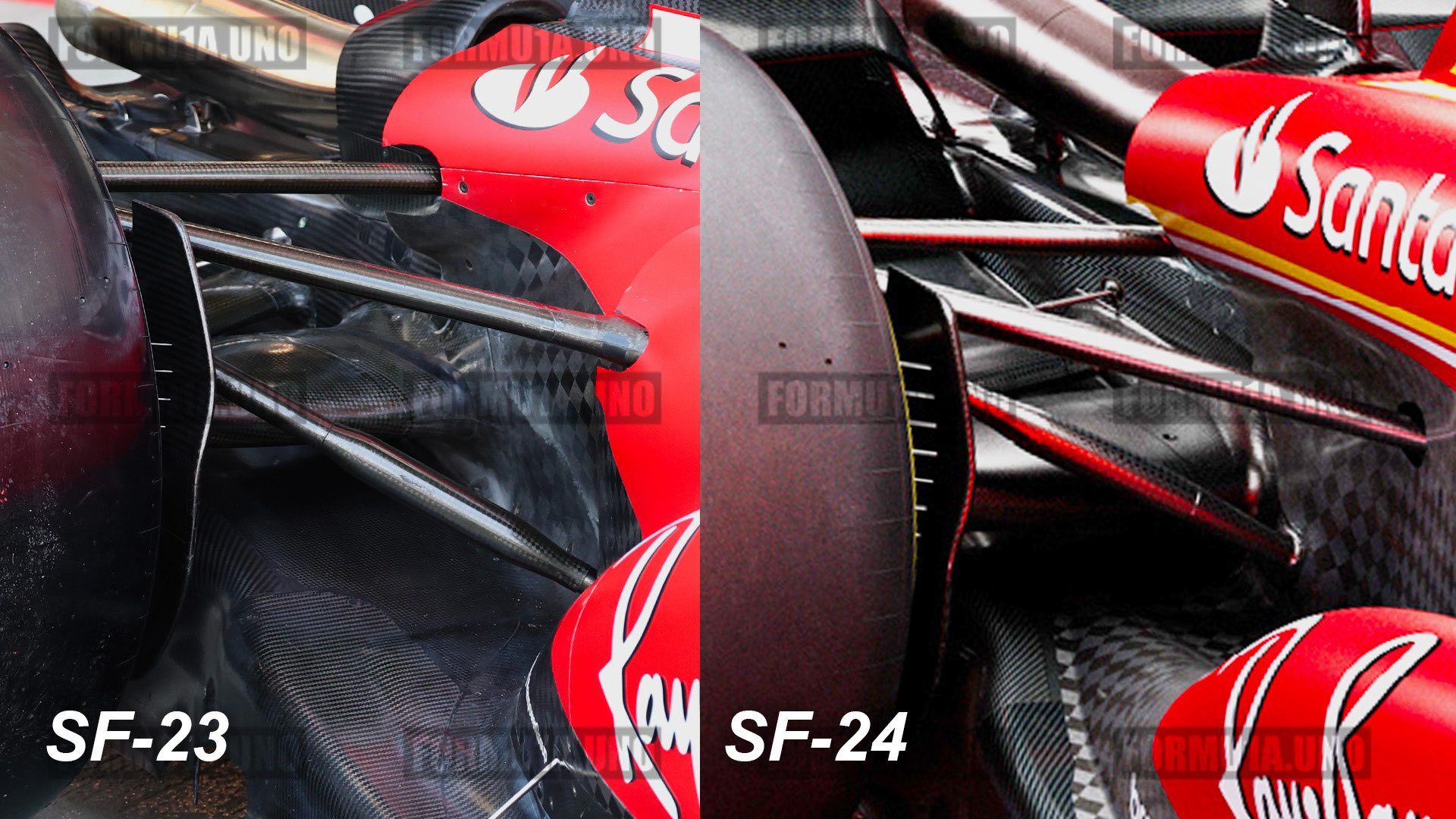Shakeman wrote: ↑13 Feb 2024, 16:31
trinidefender wrote: ↑13 Feb 2024, 16:17
Shakeman wrote: ↑13 Feb 2024, 15:38
I understand there is an interaction between the air exiting under the floor and the air flowing under the undercut but I don't understand why this has proven so vital?
Can anyone explain? Cheers.
I believe the airflow following the undercut is then pushed out wide helping to manage rear tyre wake and move it away from the diffuser. That works in conjunction with these long flat sided side pods that help to keep the front wheel wake from being sucked between the rear wheels with a physical bodywork barrier.
I understand that part but I understood there was a critical interaction between the undercut air and the air being channelled out from under the floor. I'm presuming it helps the underfloor air exit more efficiently and create more downforce at the front of the floor?
The first, most outer channels, of underfloor front end are purged directly out the side amidships to effectively "starve" the main underfloor tunnel (entrance closest to monocoque) from receiving much air volume, this then ultimately pulled from the rear diffuser section to cause the vacuum characteristic of these design.
The air going over floor and down the sides still attached to surface flow structure will ultimately be used at top and sides of that diffuser, more volume causing greater diffuser effect. This source (mid layer) appears to be what they are using front suspension upper arms to condition as like turning vane in a wind tunnel, to improve that mid layer flow and volume.
That mid flow between flor top and under sidoepod sculpture, significantly directed toward the space between the inner rear wheel and diffuser wall ostensibly to help seal that area to floor and again drive diffuser efficiency (remember exhaust blowing of this area ? ) with the topside of pods having ultimate the destination the rear beam wing area.
The Mousehole down inbard of rear wheel looks to bleed that high volume air passing it straight into the diffuser to help mitigate driving the diffuser into extremely high and uncontrolled negative pressure as the chassis comes down toward the track at extreme loading (to help avoid peak accumulation driving porpoising) so a bypass negative pressure relief valve in other words.







